Plastic bottles are not biodegradable. They are photodegradable which means they eventually break down into smaller fragments of plastic. The fragments then absorb toxins which pollute and hurt every aspect of our environment from the waterways to soil contamination.
Every single person is affected by this as we live off the land. Not enough people recycle plastic for other uses in recycling facilities. Sometimes there aren’t even recycling stations near you. A plastic bottle can be repurposed and reused for all sorts of projects. Plastic bottles come in about every size you could think of so the use for them is as far as your imagination can take you.
In this article we will discuss 15 different survival uses for plastic bottles. Some of these ideas are able to be used over and over again while others are a single use. Either way reusing plastic is helping to do your part for our environment and to help live a healthier life.
#1. Seed Starters
Cut the top off the planter and fill it with soil and start your seeds. You can also leave the top partially attached so it can close back for a single mini greenhouse for seed starting.
Another option for this is to cut the bottle and plant your seeds in the top part and then put some water in the bottom half.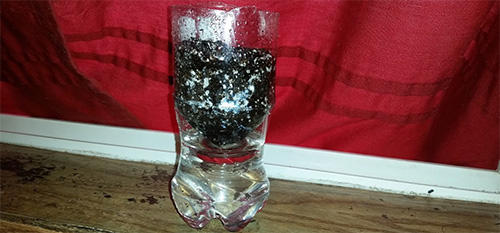 Remove the lid and place the top half into the water for a seed starting waterer.
Remove the lid and place the top half into the water for a seed starting waterer.
#2. DIY Hose Sprinkler
This can be tricky to get the bottle to fit your water hose.You simply cut a bunch of small holes in the container and turn on your water. Place this in your garden or yard for easy watering.
#3. Trash Container
What better way to collect trash than with recycled plastic. You can form a trash can for outside gatherings by running wire through bottles forming a circle. Stack them tops to bottoms and have a trash container in no time that is original and useful.
#4. Fishing Bobber
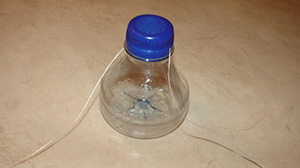 When we fish or have a snapper turtle that we are after we use a bigger bottle to float the line and hook around with. Be sure your bottle has air in it and no hole. Attach your line and hook and cap the bottle. Bait the hook and throw it in the water and wait.
When we fish or have a snapper turtle that we are after we use a bigger bottle to float the line and hook around with. Be sure your bottle has air in it and no hole. Attach your line and hook and cap the bottle. Bait the hook and throw it in the water and wait.
You will know when you have caught something as the jug will be bobbing up and down. Simply drag your catch in and you have dinner.
#5. Bird House
You can cut a large hole in the side of the bottle and put a stick in it for a perch. Hang it in a tree or somewhere birds like to gather. In no time you will have a little bird family that you can watch.
#6. Bird and Squirrel Feeders
As a survivalist you probably hunt to provide meat for you and your family. Having a squirrel feeder is a way to fatten them up for squirrel season and then they feed you. A plastic bottle can be turned into a bird feeder and hung up or you can attach it to a tree and feed the squirrels that you can watch out your window.
#7. Carry Water to Critters
In my house we save our milk jugs for carrying water to the dogs and the chickens. The jugs are small enough that even the kids can help with this chore. You can even freeze bottles of water to help keep your rabbits cool in the hot summer months.
#8. Greenhouse
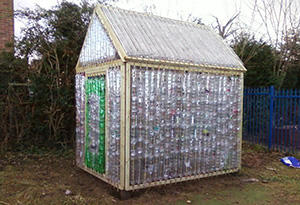
We have all seen the plastic bottle greenhouses. You can save all your bottles for this huge project that can be used for years.
The greenhouse can be built as large or small as you’d like or need.
You can build a hoop house with the bottles as well.
The plastic bottles can allow light in and attract heat and condensation.
Related: DIY Mini Greenhouse For Year-Round Vegetables
#9. Maple Sap Collection
When collecting sap from your maple trees you have several options. You can collect in a bucket or milk jug. My collecting system consists food grade tubes that drain into jugs. We cut a hole in the lid for the tube to fit through and it collects my sap. This way is clean and few if any
+bugs get in the sap.
#10. Garden Ground Waterer
This one is for watering a few plants at a time but being sure that they get plenty of water at a slower pace for absorption.
Leave the lid on the bottle and cut the bottom off.
Poke holes in the sides all around the bottle.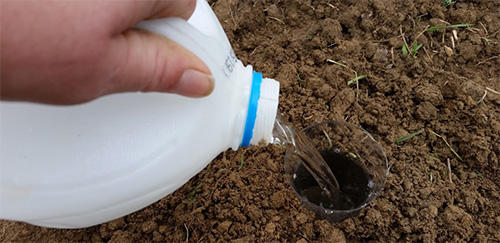 Bury the bottle, lid side down, leaving the bottom uncovered. When it is time to water you just fill up the bottle and let it do the work. This is handy especially amongst the full flower bed and tomato plants.
Bury the bottle, lid side down, leaving the bottom uncovered. When it is time to water you just fill up the bottle and let it do the work. This is handy especially amongst the full flower bed and tomato plants.
#11. Storage Containers
A plastic bottle can be used to store a number of things in. You can store items such as buttons and safety pins.
You can also use them to store sugar and flour in them. The lids will keep them from being lost or from bugs getting into it.
Related: Storing Water for When Disaster Happens
#12. Planters
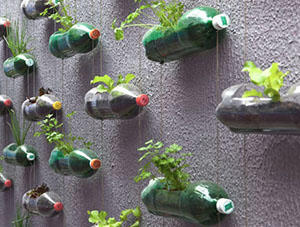 You can make planters out of the various sizes of plastic bottles. You can plant anything from herbs to flowers in them.
You can make planters out of the various sizes of plastic bottles. You can plant anything from herbs to flowers in them.
Cut a hole in the side for a shallow planter or cute the top off for a deeper planter.
These can be hung like a hanging basket or even attached to an outdoor fence or a wall for vertical gardening.
#13. Dry Storage
When I say dry storage that is different than the dry food storage. You can use plastic bottles with lids to store items in for when you are around water for things such as fishing and boating.
You can keep matches, tinder, and other survival items inside for dry storage. If you or your bottle was to fall into the water then your items can be kept dry because of being stored in a closed plastic bottle.
#14. Flower Waterer
Take a plastic milk jug and punch a bunch of tiny holes in the lid and place on the jug filled with water and use it as a waterer for your flowers and raised vegetable beds.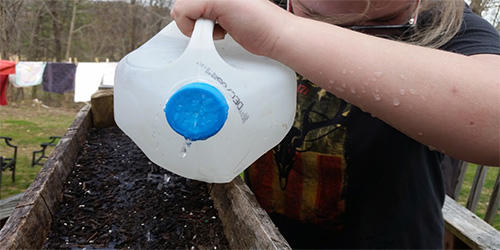
#15. Target Practice
As a survivalist you need to be on top of your shooting, whether it be for food or for protection. You can set up a shooting range with plastic bottles to hone in on your shooting skills.
You can fill the bottles with water for explosions. You can also pump air into them with a hand pump and a bicycle valve stem. Once they are tight with air and you shoot it you will hear a loud bang. This is a fun reuse of plastic bottles of all sorts.
There are several things you can do to help our planet and recycling plastic is one of them. There is always a need for bottles as a survivalist and the uses can be very important for your day to day chores or outings.
You may also like:
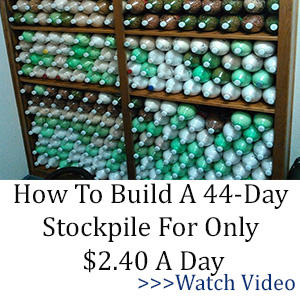 13 Survival Uses for a Tin Can
13 Survival Uses for a Tin Can
Cheap and Easy to Build Root Cellar in Your Own Back Yard (Video)
What To Do With Your Frozen Food If The Power Goes Out

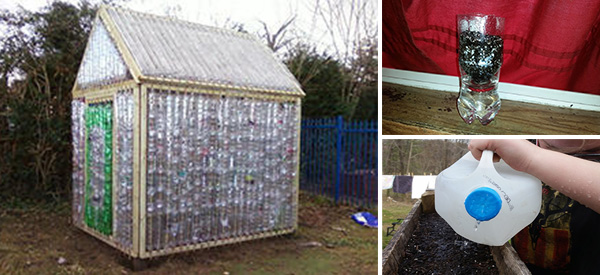













Been using them for hydroshock targets.
Bird feeders more like bait for squirrels.
I especially like the photo for #12 where the bottles are used for planters on a wall.
I also found the greenhouse interesting; contrary to what the writer said about everyone having seen them, I haven’t. ….Never dreamed of such a thing. A great idea for putting the bottles to use.
Again, I’ve learned a few good ideas for putting plastic bottles to use.
There is a town here in SoCal where a man built a house out of glass bottles.and cement. I have only seen pictures of it, I haven’t been in it. He lived in it for a while. Obviously that was before vigorous code enforcement by that city. It was when the city was unincorporated. Nowadays, he couldn’t do something like that. Interesting that it is a tourist attraction that the city advertises, yet they wouldn’t allow it today. Much like the Rodia Towers in Los Angeles. It is a major tourist attraction today and I am also certain that if Simon Rodia were trying to build them today he would be in a constant battle with the building department and perhaps even get a throw down from the LA swat team.
Simon Rodia had a major problem with code enforcement attempts, it all came to a head with them destruction testing the towers using a crane to apply lateral force.
They broke the crane, and the rest is history.
I saw a 3rd world missionary project using water bottles filled w/sand, stacked in rows on top of each other, crevices filled w/mud which created a building. I believe plastic sheeting was used for roof These folk created a community center using this process! I believe I saw this on a Starkey Hearing Aid presentation where Starkey serves people around the world with hearing aids! Starkey Foundation helping wherever and however they can.
#10 Garden Ground Water, careful with this method I had honey bees drown, I reversed, put holes in the bottle, bury it and put the lid on
I liked #10 also, but will try it the way you are describing to avoid killing honeybees but also because then I can find ways to make the waterer decorative. I can surround or cover the lid with found objects or just small bric-a-brac items in the house that I want to get out but hate to just throw away. This sounds like a good solution for when I’m going away for a long weekend at a dry time, so the plants get at least a little water while I’m away.
They also make good scoops, funnels, hoppers (think chicken/rabbit feed), clothes pin holders, toy organizers (for those with kids), purses, ‘piggy’banks…
If you cut them into thin strips, you can also use them for weaving, giving you placemats, baskets, and other stuff – much of what you can weave depends on how narrow you make the strips.
The tops can be glued or sewn, depending on the intended purpose, together, or into other items, to turn boxes or bags into pourable storage, make portable spice containers, first aid kits, etc.
They can be cut into whirly -gigs, and placed onto dowels, to make bird and underground pest deterrents, for the garden.
They can be capped, bound together, padded, and covered, to make ottoman/footstools, end tables, coffee tables, or other lightweight furniture – or, for those short on storage space, fill them with water or dry goods, then bind them together & cover, for secretly multi purpose furniture – for those tables, just top it with a board or inexpensive glass table top.
Colored or white ones can be filled with water, and turned into a lantern, simply by shining a flashlight against them, or even clear ones, by wedging them into a hole in the solid roof of a shack, shed, ‘fort’, or playhouse.
We’ve used them as barriers, to keep pets out from under furniture, too.
This is an interesting; but, rather standard list; but, potentially useful for folks just starting; but, could use some notations and additions.
#8. Greenhouse
While this is an interesting use for plastic bottles, old glass jars and bottles are a much better choice, although perhaps a bit harder to find today. I suspect this green house would need sections of its wall replaced rather often, since the tall bottles in the photo are most likely made from PET (poly ethylene-terephthalate) that would discolor and turn brittle rather quickly when exposed to the UV of the sunlight and the heat that would build up in both the bottle interior and the greenhouse structure interior.
It would be interesting to hear from someone who actually did this, and get their feedback on the service life of the bottles when permanently exposed to direct sunlight
They don’t attract hear; but, transform the infrared and capture the heat. There is a difference. As far as I know, only magnets and small static charges attract things above the subatomic level.
#9. Maple Sap Collection
Personally I use collection bags; but, this is perhaps a good idea. The problem for us is having a big enough quantity of large bottles for the task, since other than the occasional case of water, or bottle of soft drink, we rarely purchase plastic bottles of anything. When scrounging for old discarded bottles, you need to be careful what was in them before, since some chemicals can leach into the plastic and leach back out in to the contents, which if edible, could be bad for your health. This is another place where glass could be better.
#11. Storage Containers
Larger bottles from 1 liter to3 liters make a good place to store dry goods, like the above mentioned sugar, as well as whole grains; but, these bottles should be kept as you would store other food items, in a cool dark place..
#15. Target Practice
I find the air a waste of time; but, add some coloring to cold water, seal the container and set in the sun, the expansion will tighten the bottle to give that nice ”pop” and the color will demonstrate where and how far the water goes.
Mosquito Trap
A search for ” 2 liter bottle mosquito trap” will find quite a few articles and videos on this how to project, that uses a bottle cut into 2 sections, and some water, sugar, and yeast. The mixture creates carbon dioxide that lures the mosquitoes into the trap.
One last critique is that this article does not discuss the types of plastics and their properties. Some plastics can be melted and reused to make other things, while some plastics are more durable with exposure to sunlight or various chemicals. All plastic bottles are not equal and this could be good information, beyond the obvious.
Another one for watering is taking the cap off and filling the bottle with water then burying the neck in the ground. Glass bottles are better for this because plastic ones will collapse but it will still work. I have clay soil and a quart will last a few days in 100°+
The 2 1/2 gallon water jugs that have spouts at the bottoms are good for mobile drip systems. I cut a hole in the top big enough to fill it with water and cover it with an old shirt or something to keep debris out so it won’t plug up the spout and to keep the sun off of the jug. The sun will deteriorate that kind of plastic and it won’t last the season before breaking. The spout can be opened to drip at whatever speed you want it.
I buy milk in 1 gallon containers which are some kind of recyclable plastic. I drill 4 – 1/8″ holes in the bottom and a 1/8″ hole in the cap. I just place them at the base of the bush that I am watering. When I want to water the bush, I unscrew the cap, fill the 1 gallon jug with water and screw the cap back on. I use as many gallon jugs as I need to put the desired amount of water on the bush.
Why a cap? Sometimes the water doesn’t drain completely out and I don’t want mosquitos to use that standing water for their breeding ground. The 1/8 hole keeps them from getting in the jug.
Why a hole in the cap? I have found that without the hole, two things happen. One, the jug collapses as the water drains out and two, with the vacuum created the water won’t drain out. 1/8″ holes have been arrived at by trial and error. I drill 4 holes in the bottom because moss will form if the jugs are sitting in the sun and it sometimes slows the water drainage to the point they don’t drain completely.
The plastic milk jugs will deteriorate over the course of the summer and will need to be replaced by the end of the summer, especially if they are in a spot that gets full sun. Not a problem. We drink enough milk that we always have a supply of gallon jugs on hand. The plants don’t mind if the jugs smell sour but I rinse them out anyway because sometimes the smell of sour milk is overwhelming when one takes the cap off to refill them.
Good article. Problem, plastic gets brittle in the sun. it also magnifies solar rays, which makes it good for cooking roots. I have seen them used, the bottoms cut out, turned upside down with rock wool in them to support plants in an aquaponics set up. water runs into the top and drips down thru each bottle in the series. in the bottom, it runs into a PVC pipe and back to the fish tank. They can be used for years, and are easy enough to replace. Plenty of supply all the time in most homes. Word is, we now have the capacity to reconvert plastic back to usable oil. If it’s cheap enough, Navy would have drag lines to collect all those plastic bags and save a bundle on fuel. They want this if only due to SHFT. niio
I have commented in the past that the Japanese government is way ahead of the U.S. government and at least California state government in emergency preparedness. They run public service announcements periodically on NHK, the national TV station describing prepper hacks for emergency use.
One hack involved using 1-liter beverage bottles. You don a large shirt, preferably one with thin material. They illustrate a large T-shirt. Unscrew the cap of the one liter bottle and starting at one side of your torso, insert the bottle under your shirt and screw the top back on outside the shirt so that the bottle is held under the shirt by the lid and the shirt. Continue doing that across your chest . Have someone assist you in doing the same across our back. When you have all the bottles secured, tie a rope or use a long belt and run it around the outside of the shirt to secure the bottoms of the bottles. You now have a personal flotation device. The announcer says that ten 1-liter bottles will support an adult and eight will support a child. Two bottles fastened to each side of a small dog will support the dog. NHK is talking about Japanese sized adults. If I were a large sized U.S. citizen, I would use 2-liter bottles and use as many as would fit from arm to arm across the front and across the back.
By screwing the tops into the shirt and using belt to stabilize the bottoms the bottles remain upright and act just like the longitudinal air chambers in an air flotation vest.
I thought that was a great idea for a low cost personal flotation device — another use for plastic bottles.